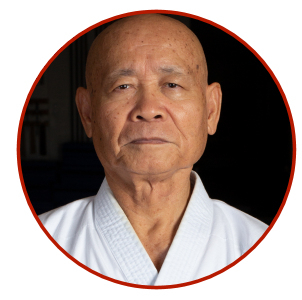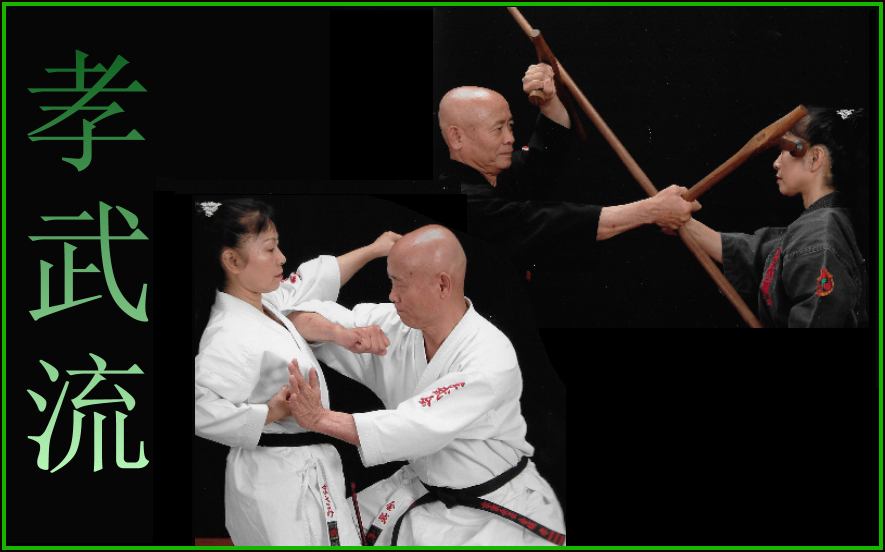Kōburyū
Kōburyū was established in the year 2000 by Sōke Kaichō Kinjō Takashi . However, the techniques of Kōburyū did not burst into existence in 2000. Sōke Kaichō Kinjō Takashi spent much of his karate career studying and teaching in the Uechi Ryū family of Okinawan karate. After over 40 years of in-depth analysis, his movement and techniques had taken a path inherently different from that of Uechi Ryū. That difference became Kōburyū, a practical style of modern karate emphasizing efficient and powerful use of the human body.
While Kōburyū is very new, it remains true to the goals of old-time karate. However, it is not limited by the need to duplicate the past (a past we see only dimly). Because Kōburyū is new, it is important to not just practice but to study in depth how we are different and, more importantly, why the differences are better.

Sōke Kaichō Kinjō Takashi
Founder of Kōburyū
Kōburyū, Modern and Traditional
How can a karate style be both modern and traditional at the same time? Most karate masters of today are content to simply pass on exactly what was taught to them in exactly the way that it was taught to them. This is not true to the history of the fighting arts of Okinawa. Historically, the fighting arts of ancient Okinawa were never static. Okinawa was a land of seafarers. Ideas from Japan, Korea and the many fighting arts of Southeast Asia became incorporated into the native Okinawan fighting art called te (ti in the Okinawan dialect). As a protectorate of the powerful Ming Dynasty of China, the Okinawan fighting arts were especially influenced by Chinese kung fu. The effectiveness of the Okinawan fighting arts derived from this great melting pot of ideas and methodologies.
Sōke Kaichō Kinjō believes that karate should be an evolving art. Like the karate masters of old, he has continued to analyze and incorporate new ways to generate power and effectiveness while remaining true to the traditional roots of karate.
Kōburyū Is Both Karate and Kobudō
Kobudō is the study of the weapons of ancient Okinawa. Historically, a dojo would offer either karate or kobudō, but not both. The Uechi Ryū organization itself suffered internal conflict and splintered over the teaching of kobudō in a Uechi Ryū dojo. These days, due to the growing popularity of kobudō, you will find dojos that offer both, but the karate style and the kobudō style are different.
Sōke Kaichō Kinjō started training in kobudō under Matayoshi Shimpo at nearly the same time as he started Uechi Ryū training. It was unusual for a student of that era to study both karate and kobudō . Indeed, Itokazu Seiki, Sōke Kaichō Kinjō’s Uechi Ryūo sensei, once told his young protégée that the practice of kobudō would ruin his karate technique. Far from it, Sōke Kaichō Kinjō came to believe that karate and kobudō are like two halves of the same coin. Kinjō Kaichō has taught karate and kobudō together since 1965. He came to believe that karate and kobudō not only could but should be taught as one style. Therefore, Kōburyū offers a unified approach to both karate and kobudō. This is unique to Kōburyū.

